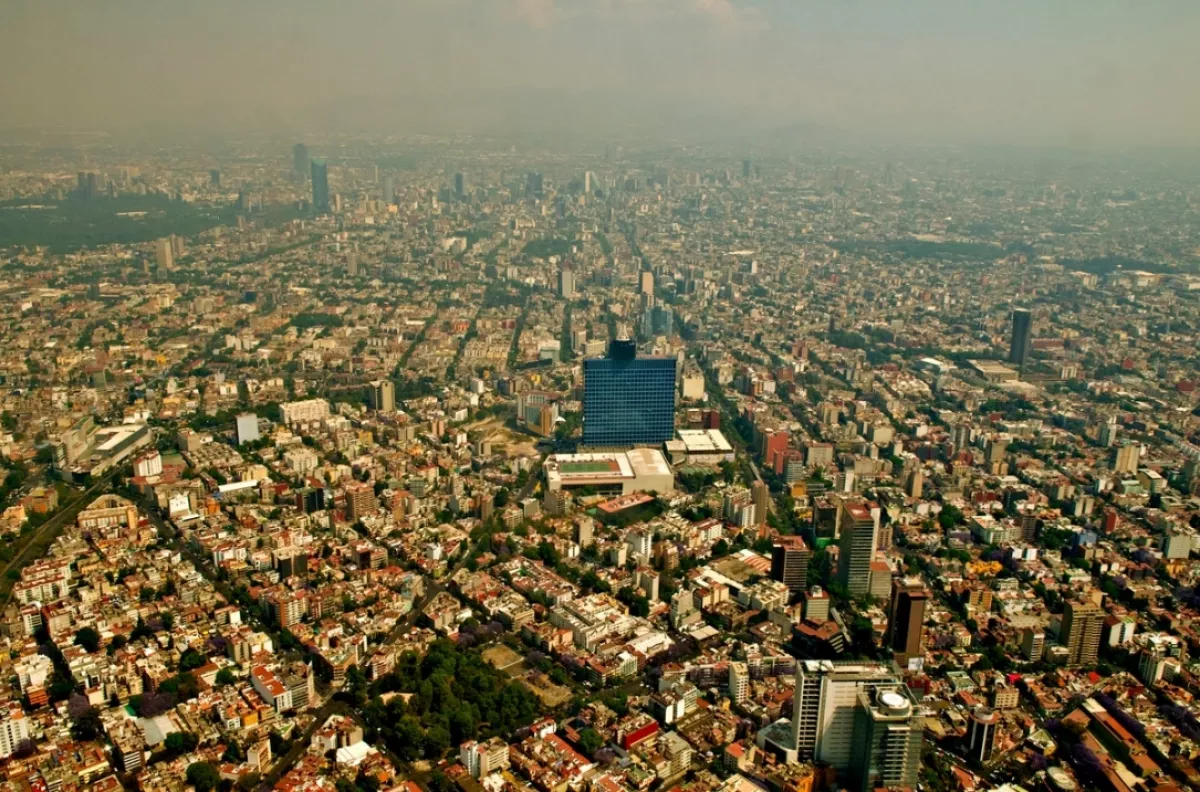Baku on the verge of urban overstrain How to balance jobs between the capital and regions
The United Nations identifies hyper-urbanisation as a key driver of overpopulation in major cities, leading to transport collapses, housing shortages, water scarcity, environmental pollution, and rising social inequality and unemployment. These challenges are especially pronounced in developing countries—and unfortunately, some of these negative trends are increasingly visible in Baku.
A unique feature in Azerbaijan is the extreme concentration of investment in the capital’s business sector: according to official statistics, 76% of all new jobs created in the country during the first three quarters of 2025 were in Baku.
In most countries, the latter half of the 20th century—and particularly the first quarter of the 21st—has been defined by the rapid growth of megacities, largely fueled by migration from rural areas. In the past century, industrialisation and large-scale construction, which required millions of new workers, were the main drivers of this trend.
By contrast, in the post-industrial era, large cities no longer require such massive labour forces. Industrial facilities are increasingly relocated outside major urban centres, and the scarcity of large, affordable plots for public housing has sharply reduced demand for construction workers. Yet, despite these changes, internal migration in developing countries has not only persisted—it continues to grow at an accelerating pace.
As highlighted in a recent report by the UN Department of Economic and Social Affairs (DESA), “Global Urbanisation and Key Trends in Europe and Central Asia”, by the mid-20th century, only 20% of the world’s population lived in large cities. In recent years, this figure has exceeded 45% of the planet’s population, which now totals 8.2 billion. Moreover, by 2030, six out of ten people worldwide are expected to live in major urban centres.
In contrast, sparsely populated rural regions today account for less than 20% of the global population, more than twice as low as in the second half of the 20th century.

According to DESA experts, the uncontrolled influx of internal migrants into megacities carries significant negative consequences. Rapid population growth in urban centres leads to a shortage of affordable housing, while metropolitan areas struggle with traffic congestion and environmental pollution. Pressure on water and energy resources also increases noticeably.
These factors exacerbate social inequality: rapid urbanisation is accompanied by the emergence of slums and a rise in the number of people living in illegally constructed housing that fails to meet safety and sanitation standards, leaving residents without legal protections.
Unfortunately, Baku, the capital of Azerbaijan, faces some of the challenges outlined above. In the last century, the city’s high level of urbanisation was driven by the rapid development of the oil and refining industries, with over half of the country’s industrial capacity concentrated there. However, in the first quarter of the 21st century, Baku has experienced accelerated deindustrialisation: former industrial zones have been redeveloped into residential complexes, and production has been relocated to specialised clusters outside the city.
Despite this, the inflow of labour into Baku has not slowed—in fact, it continues to increase. According to some experts, the Greater Baku agglomeration (including the cities of Sumgayit and Khirdalan, as well as Absheron settlements) now has around five million residents, effectively half of the country’s population.
The population influx, alongside global trends of hyper-urbanisation, is also shaped by factors specific to the national economy. The primary driver is the provincial population’s desire to improve their quality of life and wealth by accessing opportunities available only in large cities. For a comparatively small minority, this goal is achieved through higher education and acquiring new professions in digital or financial sectors, high-tech services, public administration, education, marketing, or large-scale commerce.
For those less successful in their careers, new urban residents struggle to establish themselves in the capital, taking on any available work that does not require high qualifications—working as taxi drivers, repair technicians, small-scale couriers, or shop assistants in grocery stores, in short, any job that allows them to survive and remain in the city.

Indeed, the opportunities to find work in the capital far exceed those available in the country’s regions. This is confirmed by recently published official statistics: in the first three quarters of 2025, 77,692 new jobs were created in Azerbaijan, of which 58,930—or 76%—were in Baku. According to the State Statistical Committee, 91.4% of all newly created jobs were provided by the private sector, predominantly within small and medium-sized enterprises (SMEs) and individual entrepreneurship. Only 9.1% of new jobs were created in newly established enterprises and organisations, while the vast majority—89.8%—were in existing ones.
What do these figures indicate? First and foremost, despite visible successes in regional development policies—such as the creation of industrial zones, industrial districts, and agro-parks in the regions, along with programmes supporting SMEs—the private sector is still not fully capable of providing sufficient employment across the country.
Of course, it would be mistaken to rely solely on private sector initiatives, and it must be acknowledged that significant steps have been taken in recent years to increase employment through public-private partnerships. “From January 1, 2019, to November 1, 2025, an average of around 200 new jobs were created daily in the private non-oil sector. Over the same period, the number of active taxpayers in the country doubled, exceeding 845,000,” stated Azerbaijan’s Minister of Economy, Mikail Jabbarov, during a plenary session of the Milli Majlis (parliament) while discussing the draft “State Budget for 2026” in its first reading. The minister also highlighted that between 2019 and 2024, the volume of non-oil industrial production increased by 1.9 times.
A significant role in this process has been played by the Small and Medium Entrepreneurship Development Fund (SIF), operating under the Ministry of Economy: over 52,000 entrepreneurs have so far benefited from its loans, with the total volume of funds issued over three decades exceeding 3.3 billion manats ($1.9 billion). For example, in January–September 2025, the Fund provided 250 million manats ($147) in concessional loans across 4,590 investment projects, with roughly half of these funds directed to agricultural production in the regions, collectively contributing to the creation of 3,500 new jobs.
In recent years, the economic development of the regions has been supported by large-scale projects aimed at reviving the Karabakh and East Zangezur economic regions, with over 20 billion manats ($11.8 billion) allocated from the state budget over the past five years. An additional 13.5 billion manats ($8 billion) in state funds are planned for these initiatives in 2026–2029. These efforts are beginning to yield results: in the first three quarters of 2025, 1,700 new jobs were created in the territories liberated from occupation, representing an 11% increase compared to the same period last year. During this period, 170 new enterprises and organisations were registered, along with 2,805 new private business entities.
Nevertheless, despite these positive trends, the process of population migration in search of employment in megacities has not yet been fully reversed. “In the regions, of course, employment issues are a top priority,” President Ilham Aliyev recently stated while receiving the newly appointed plenipotentiary representative of the head of state in the Nakhchivan Autonomous Republic and heads of executive authorities in several districts. “Overall, Azerbaijan has carried out major employment reforms in recent years, and the unemployment rate has fallen. However, it is also true that migration from the regions to Baku and other large cities still persists. There are various reasons for this.”

Among the key factors slowing business development—and consequently the creation of new jobs—in the country’s regions, experts highlight the difficulty of accessing borrowed funds. The domestic banking system is not optimally structured to provide low-interest, long-term financing to small enterprises in regional areas. These challenges are most pronounced in the agricultural sector due to high climate-related risks (such as water scarcity), insurance problems, a lack of liquid and bank-attractive collateral, and gaps in the financial reporting of regional SMEs.
At the same time, the situation is exacerbated by an extremely low level of factoring and leasing operations, as well as the absence of alternative financial instruments for regional businesses.
By comparison, over the first eight months of the current year, domestic banks issued loans totalling 28.705 billion manats ($16.88 billion), of which the lion’s share—21.8 billion manats ($12.82 billion)—went to Baku. The lowest interest rates on loans were also recorded in the capital, at 12.63%, while in most agricultural regions, rates remain in the range of 19–20%.
Agriculture, agro-processing, and the food industry are the main areas of production activity for SMEs in Azerbaijan’s peripheral regions. However, growth in the agricultural sector in recent years has remained modest, at just 1.5–2%.
A key factor is the extremely low productivity of small-scale farms, which often do not use modern agronomic techniques, efficient irrigation systems, or contemporary machinery, resulting in higher production costs. Small farmers are significantly less profitable compared to large-scale crop agro-parks, intensive livestock farms, and greenhouse enterprises. For the same reason, the share of small individual farms in agricultural exports remains low. Consequently, this often leads to the bankruptcy of small rural producers and their migration to cities in search of employment.
Overall, Azerbaijan’s SMEs retain significant untapped potential. Today, this sector accounts for around 50% of all jobs, yet contributes no more than 15% of the country’s GDP in terms of added value. This is largely because most Azerbaijani SMEs operate in sectors with relatively low value-added, such as trade, services, transport, hospitality, and catering. Notably, the key objective of the “Strategy for Socio-Economic Development of Azerbaijan for 2022–2026” is to increase the share of SME production to 35% of GDP and raise employment in this segment to 60%.
Achieving this will require further optimisation of the business climate and the creation of incentives for expanding production projects. Measures could include reducing the fiscal burden on industry in the regions, offering new concessional financial instruments, expanding loan subsidies, and so on. In short, it should become more profitable for businesses to invest in production projects in the regions rather than relying on trade and service ventures in the capital. Clearly, addressing these challenges over time will help redirect labour migration patterns.








